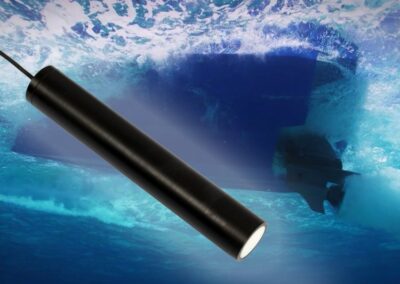What Value Should my Hull Potential be ?
Measuring your boats Hull Potential is easy enough. All you need is a Boat Meter Kit and the readings can be taken in minutes. But what does the reading actually mean? Understanding the readings can ensure that preventative action can be taken before something more serious occurs.
Understanding your Hull Potential reading
The general principle of taking a Hull potential reading is to establish that the corrective measure you have taken to protect your hull are working or not. The reading should be more negative than the potential for unprotected metal in the chart given below. This is because sacrificial anodes are added which are always more negative in potential than the hull. They give up electrons first so that your Hull does not. Giving up electrons is corrosion.
The most difficult thing for boat owners is to understand what the value should be and to understand where there is a problem.
The first thing to say is that the measurement should be made regularly as the Hull is corroding from day 1 and it will only decline. The key is to identify issues, find the cause and act.
Guide to readings:
If you take a reading when you have added the anodes it will give a benchmark as to what a protected result is. You should measure regularly to track the potential. When it reaches close to the metal value below it means the anodes are depleted. At this point record the result and replace the anodes. Boats are often removed from the water and the anodes replaced unnecessarily. It is also common to leave it too late. Take readings regularly and take control of your maintenance schedule.
The action is normally replacing anodes or simply moving your boat from an oxidising environment. Corrosion is caused by the loss of electrons (oxidation) of the metal hull. You protect the hull by adding a more active metal e.g. Magnesium, Zinc or Aluminium. This is known as Cathodic protection.
If there is stray DC on your boat or a neighbouring vessel the corrosion is markedly accelerated. The most drastic corrosion will occur where the earth rods in a marina or harbour are not effectively grounded. In such instances electrons are accelerated towards the nearest anodes which means they are extracted from adjacent metals. i.e. your sacrificial anodes and then your hull or drives.
We have put together a table of potentials that you should expect from the common metals when measured using a Silver/Silver Chloride Cathodic Protection Reference Electrode. Some published data shows the values using a Copper Sulphate reference electrode is which instances they will be around 100mV more positive so beware. More importantly do not use a silver spoon as a reference. It is not a reference electrode and has a potential of its own which changes as it oxidises (tarnishes).
Potentials of Metals in water:
|
Platinum |
-100mV |
|
Brass or Bronze |
-300mV |
|
Cast Iron |
-600mV |
|
Mild steel (rusted) |
-300 – 600mV |
|
Mild Steel |
-600 – 800 mV (depends on the grade/quality) |
|
Aluminium |
-900mV |
|
Aluminium Alloy (5% Zinc) |
-1150mV |
|
Zinc |
-1200mV |
|
Magnesium |
-1850mV |
Note: The Hull is connected to the positive terminal and all results will be negative.
The reading is in mV and is called a Potential difference measurement. Electrons are stored in the metal structure and have the potential to be released in the oxidation process.
Magnesium has more bound electrons in its structure that are readily lost and therefore it corrodes first. This makes it a most effective sacrificial anode. It is however only suitable for inland waterways due to its rate of loss.
Zinc is the next anode of choice for river craft and some Marine vessels however Aluminium would be generally more practical in sea going boats.
With a combination of metals the Hull potential will be a hybrid of the two. Note the Aluminium Alloy value above which is between the Aluminium and Zinc values. A significant coverage of sacrificial anodes will make the Boat hull, on average more negative.




